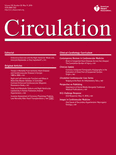Wasfy MM, Baggish AL.
The cardiovascular response to high-intensity exercise has intrigued clinicians and scientists for more than a century. Since the initial reports of cardiac enlargement among Nordic skiers1 and rowers,2 a great deal has been learned about how the heart and vasculature remodel in response to endurance exercise. Through the efforts of many investigators and their athletic subjects, we now recognize the heart as an organ characterized by tremendous plasticity that permits chamber dilation and myocardial hypertrophy in response to the hemodynamic stressors inherent in endurance sporting activity.
Our contemporary view of the endurance athlete’s heart includes attributes such as biventricular and biatrial dilation, mild to moderate ventricular hypertrophy, and normal to mildly reduced resting biventricular systolic function (as defined by ejection fractions).3 Functionally, this remodeling pattern facilitates stroke volume augmentation and thus increases cardiac output reserve during exercise. Yet, are these adaptations that facilitate successful endurance sport participation and lead to optimal athletic performance cost free? More specifically, do the short-term physiological benefits of exerciseinduced cardiac remodeling come with long-term trade-offs that have undesirable clinical consequences?
Article in PDF (for private use only)



